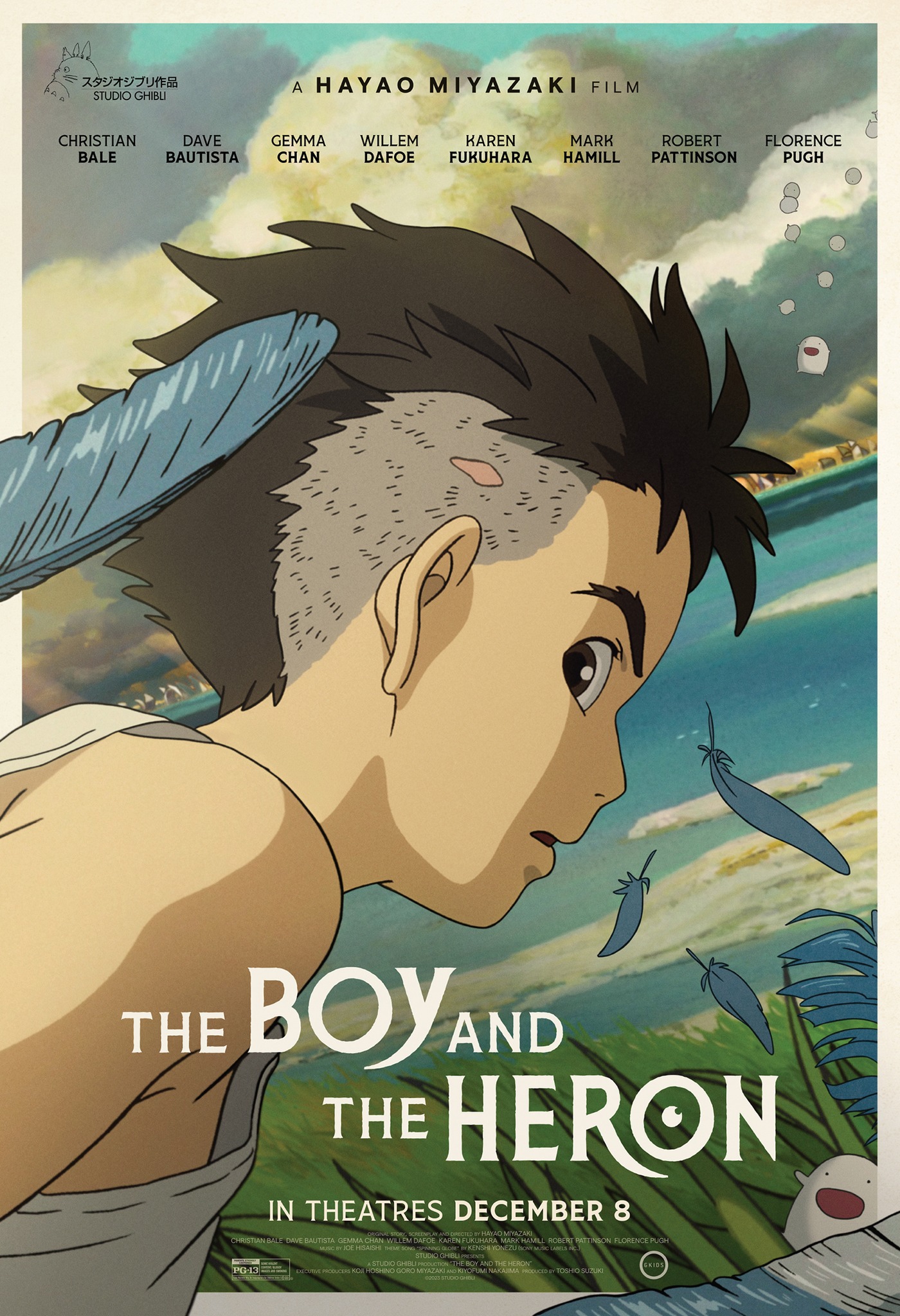
Gaming Editor Louis Wright finds The Boy and the Heron to be a near perfect exploration of death and memory
Very rarely does a filmmaker’s career have the same level of consistency in quality as Hayao Miyazaki. Throughout his 44-year long career as a director, he has produced some of the greatest animated films of all time, recognisable for their distinct aesthetics and presentation of thought-provoking ideas. The Boy and The Heron (2023) is no different.
Similar to how its predecessor The Wind Rises (2013) was Miyazakis’s goodbye as a filmmaker and an artist, this film is his personal goodbye to those he loves. Through its handling of death, grief, trauma and the impact that these things can have on an individual, the film’s inception as an explanation to his grandson that he will be passing on to another world soon shines through. Therefore, far more thematically dense than his other features, there is a lot to consider when discussing The Boy and The Heron.
The film is perfectly constructed with not a fault to be found in its well considered direction
Primarily, the standard aspects of Miyazaki’s films are present. The flawless animation that has each frame personally approved by the director is at its best here, with genuinely haunting imagery introducing the film and setting the tone. Likewise the sound design and score by Joe Hisaishi brings the emotional gravitas to each passing moment of the film. In this regard the film is perfectly constructed with not a fault to be found in its well considered direction. Attention is therefore placed on the narrative structure and thematic cohesion of the film as the main drawing point. Here lies, arguably, The Boy and The Heron’s greatest strength. As aforementioned, the film is undoubtedly about death but what it does with this broad theme and how it is applied is what sets it apart from its contemporaries.

The most pertinent quote from the film that conveys the intention and ideas is saying that we should “Build a world of bounty, peace, and beauty.” That is to say, even if traumatic or sad events occur to us in life, we must always have something that we want to strive towards and work for. Even those mired by sin and malice can be redeemed of their wrongdoings through the commitment to doing right in life. Using death, and the struggles and wrongdoings it can lead to, as an effective springboard to the discussion of what it means to move forward in life is an incredible depiction of a sensitive topic. This handling creates an understanding for the audience that it is important to move on from loss lest we lose ourselves to it as well.
The film’s basis and Japanese title poses a question to its audience: “How Do You Live?”
“It’s normal to forget” is the logical conclusion to this. Time passes from the losses we experience in life, and with this can come the loss of treasured memories featuring those that have gone. As the film states, this is a normal occurrence. Memories fade with time, whether that’s to protect oneself from the trauma they hold or because of an acceptance of what they hold; that does not mean these memories are gone, however, as the influence they have still remain and define the people we exist as today. Death, while hard to come to terms with, is not necessarily presented as a negative element within the story. It is inevitable and, ultimately, an integral part of life and the human experience. Therefore if we enjoy the lives we live while on Earth, then we should not fear the advent of death and the unknown that it brings. The film’s basis and Japanese title poses a question to its audience: “How Do You Live?” As an exploration of the idea and concept of death, Miyazaki questions what it truly means to be alive, and what drives us to move forward. In this the audience is made to question their own perception of life, and what they will make of it; the film guides them to Miyazaki’s answer but leaves interpretation for a more personal conclusion.
If The Boy and The Heron is to be Miyazaki’s final foray into the world of cinema it is a beautiful and fitting end. The final 20-minutes define a passing of torch from one generation to the next, with the hope that the philosophy that the filmmaker has toted for the past 44-years; his pacifism, his hope, and his love will thrive going forward. The abruptness with which his career may end is poignant, sad things may happen but we move forward holding the ideals of those we have lost close.
Verdict: 10/10
The Boy and The Heron screened early at the BFI London Film Festival. It will be released in cinemas on 29th December.
Enjoyed this sneak peek review? Check out more recent articles from Redbrick film:
Review: Indiana Jones and the Dial of Destiny | Redbrick Film

Comments